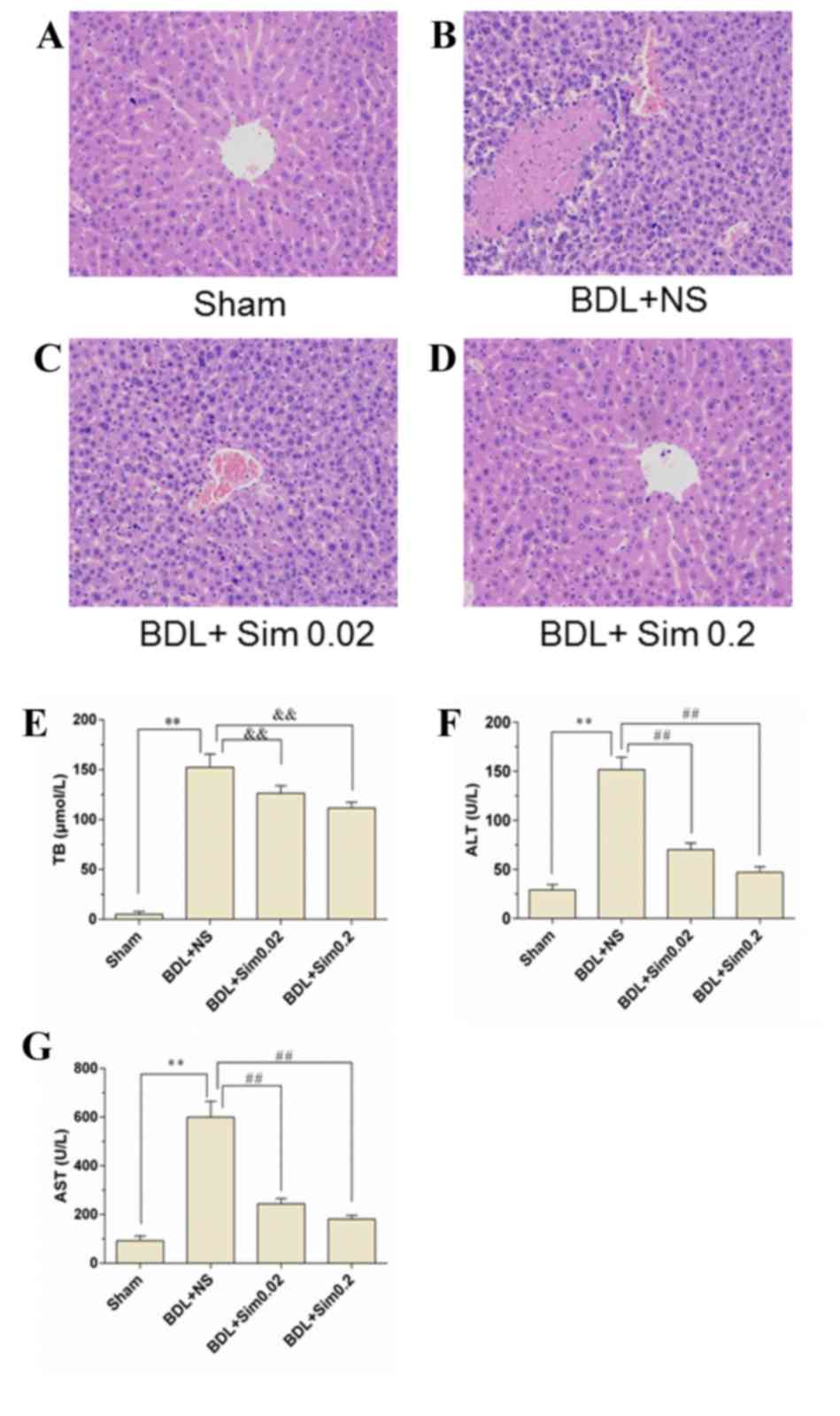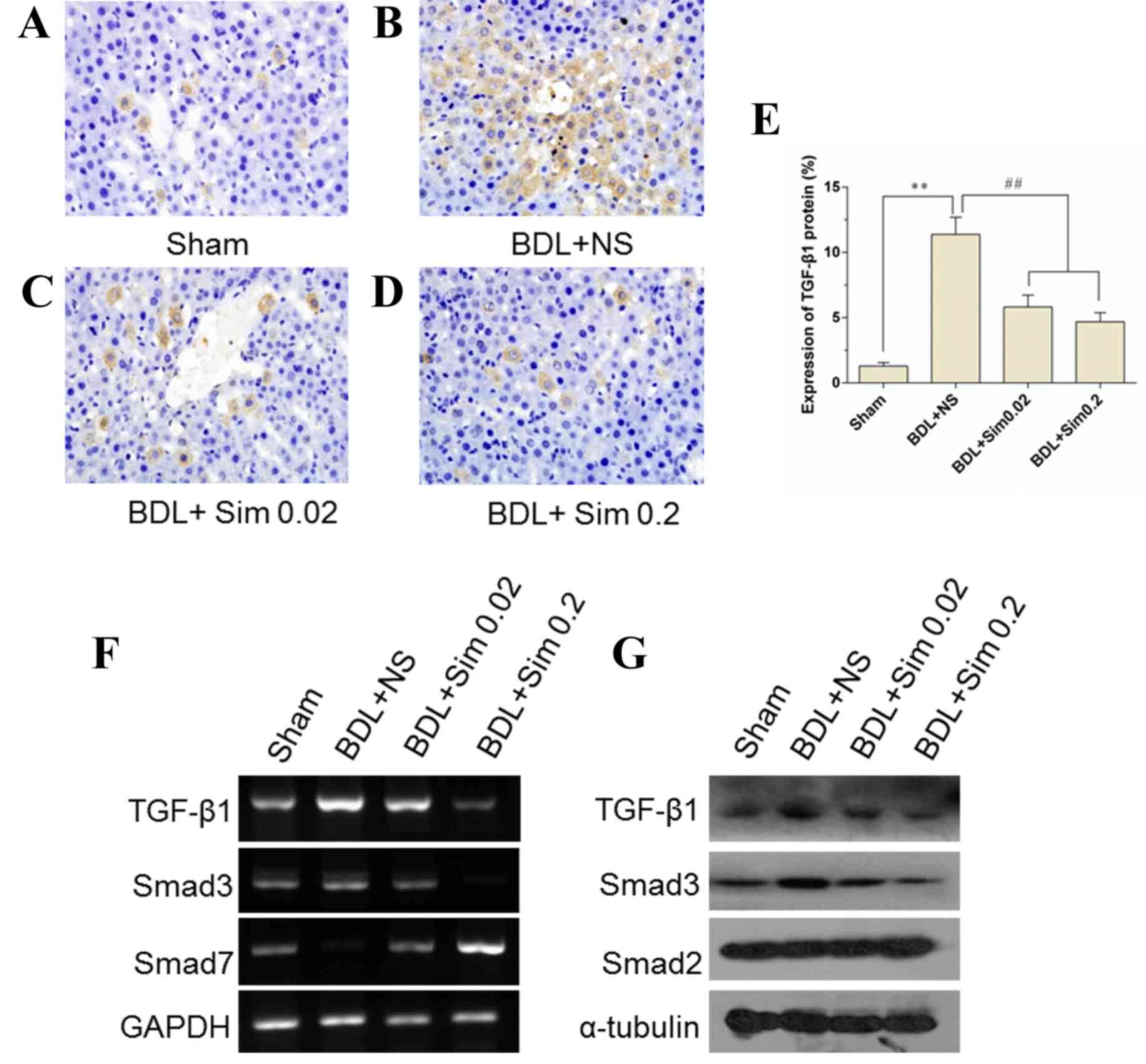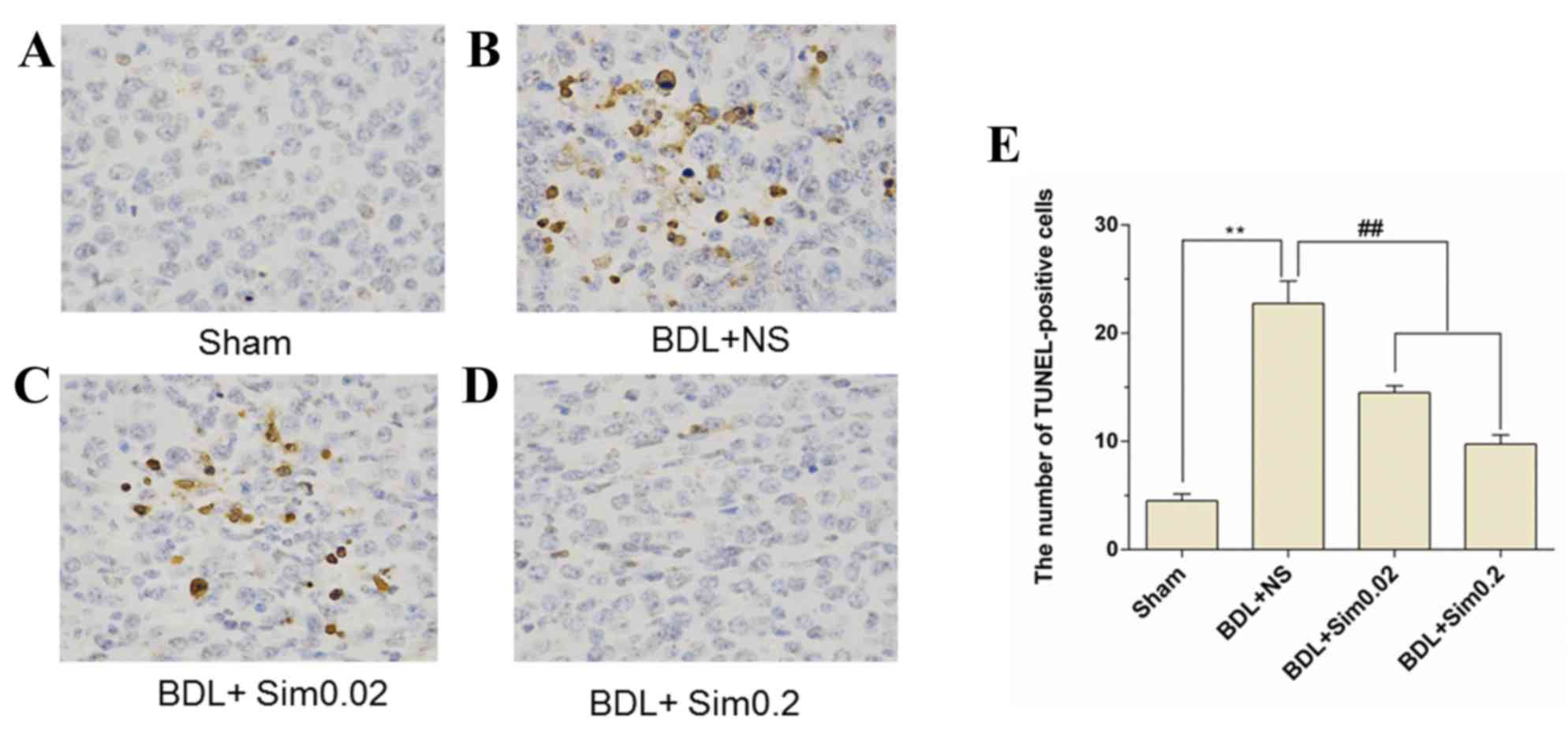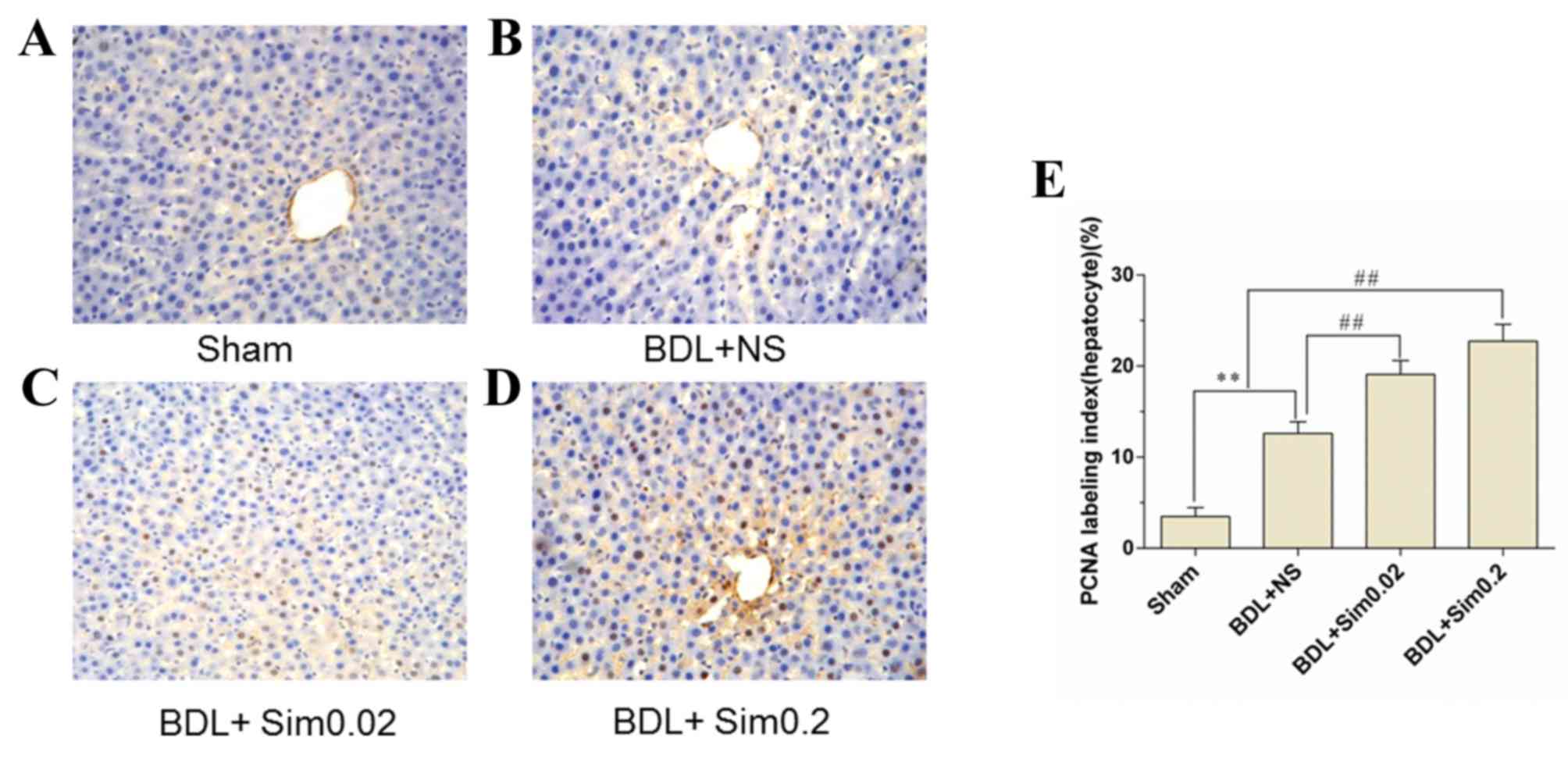|
1
|
Kimmings AN, van Deventer SJH, Obertop H,
Rauws EA, Huibregtse K and Gouma DJ: Endotoxin, cytokines, and
endotoxin binding proteins in obstructive jaundice and after
preoperative biliary drainage. Gut. 46:725–731. 2000. View Article : Google Scholar : PubMed/NCBI
|
|
2
|
Addley J and Mitchell RM: Advances in the
investigation of obstructive jaundice. Curr Gastroenterol Rep.
14:511–519. 2012. View Article : Google Scholar : PubMed/NCBI
|
|
3
|
Fang Y, Gurusamy KS, Wang Q, Davidson BR,
Lin H, Xie X and Wang C: Meta-analysis of randomized clinical
trials on safety and efficacy of biliary drainage before surgery
for obstructive jaundice. Br J Surg. 100:1589–1596. 2013.
View Article : Google Scholar : PubMed/NCBI
|
|
4
|
Okaya T, Nakagawa K, Kimura F, Shimizu H,
Yoshidome H, Ohtsuka M, Morita Y and Miyazaki M: Obstructive
jaundice impedes hepatic microcirculation in mice.
Hepatogastroenterology. 55:2146–2150. 2008.PubMed/NCBI
|
|
5
|
Yeki M, Koda M, Matono T, Sugihara T,
Maeda K and Murawaki Y: Preventative and therapeutic effects of
perindopril on hepatic fibrosis induced by bile duct ligation in
rats. Mol Med Report. 2:857–864. 2009.
|
|
6
|
Jadhav SB and Jain GK: Statins and
osteoporosis: New role for old drugs. J Pharm Pharmacol. 58:3–18.
2006. View Article : Google Scholar : PubMed/NCBI
|
|
7
|
Dold S, Laschke MW, Lavasani S, Menger MD,
Jeppsson B and Thorlacius H: Simvastatin protects against
cholestasis-induced liver injury. Br J Pharmacol. 156:466–474.
2009. View Article : Google Scholar : PubMed/NCBI
|
|
8
|
Hayashi H, Sakai K, Baba H and Sakai T:
Thrombospondin-1 is a novel negative regulator of liver
regeneration after partial hepatectomy through transforming growth
factor-beta1 activation in mice. Hepatology. 55:1562–1573. 2012.
View Article : Google Scholar : PubMed/NCBI
|
|
9
|
Ren M, Wand B, Zhang J, Liu P, Lv Y, Liu
G, Jiang H and Liu F: Smad2 and Smad3 as mediators of the response
of adventitial fibroblasts induced by transforming growth factor
β1. Mol Med Report. 4:561–567. 2011.
|
|
10
|
Hill CS: Nucleocytoplasmic shuttling of
Smad proteins. Cell Res. 19:36–46. 2009. View Article : Google Scholar : PubMed/NCBI
|
|
11
|
Derynck R and Zhang YE: Smad-dependent and
Smad-independent pathways in TGF-β family signaling. Nature.
425:577–584. 2003. View Article : Google Scholar : PubMed/NCBI
|
|
12
|
Yang T, Chen SL, Lu XJ, Shen CY, Liu Y and
Chen YP: Bone morphogenetic protein 7 suppresses the progression of
hepatic fibrosis and regulates the expression of gremlin and
transforming growth factor β1. Mol Med Rep. 6:246–252.
2012.PubMed/NCBI
|
|
13
|
Tao YY, Wang QL, Shen L, Fu WW and Liu CH:
Salvianolic acid B inhibits hepatic stellate cell activation
through transforming growth factor beta-1 signal transduction
pathway in vivo and in vitro. Exp Biol Med (Maywood).
238:1284–1296. 2013. View Article : Google Scholar : PubMed/NCBI
|
|
14
|
Luan Z, He Y, Alattar M, Chen Z and He F:
Targeting the prohibitin scaffold-CRAF kinase interaction in
RAS-ERK-driven pancreatic ductal adenocarcinoma. Mol Cancer.
13:382014. View Article : Google Scholar : PubMed/NCBI
|
|
15
|
Wu MH, Cao W, Ye D, Ren GX, Wu YN and Guo
W: Contactin 1 (CNTN1) expression associates with regional lymph
node metastasis and is a novel predictor of prognosis in patients
with oral squamous cell carcinoma. Mol Med Rep. 6:265–270.
2012.PubMed/NCBI
|
|
16
|
Canbay A, Hiquchi H, Bronk SF, Taniai M,
Sebo TJ and Gores GJ: Fas enhances fibrogenesis in the bile duct
ligated mouse: A link between apoptosis and fibrosis.
Gastroenterology. 123:1323–1330. 2002. View Article : Google Scholar : PubMed/NCBI
|
|
17
|
Bird MA, Black D, Lange PA, Samson CM,
Hayden M and Behrns KE: NFkappaB inhibition decresases hepatocyte
proliferation but does not alter apoptosis in obstructive jaundice.
J Surg Res. 114:110–117. 2003. View Article : Google Scholar : PubMed/NCBI
|
|
18
|
Tsuyuguchi T, Takada T, Miyazaki M,
Miyakawa S, Tsukada K, Nagino M, Kondo S, Furuse J, Saito H, Suyama
M, et al: Stenting and interventional radiology for obstructive
jaundice in patients with unresectable biliary tract carcinomas. J
Hepatobiliary Pancreat Surg. 15:69–73. 2008. View Article : Google Scholar : PubMed/NCBI
|
|
19
|
Lacaine F, Fourtanier G, Fingerhut A and
Hay JM: Surgical mortality and morbidity in malignant obstructive
jaundice: A prospective multivariate analysis. Eur J Surg.
161:729–734. 1995.PubMed/NCBI
|
|
20
|
Rombouts K, Kisanga E, Hellemans K,
Wielant A, Schuppan D and Geerts A: Effect of HMG-CoA reductase
inhibitors on proliferation and protein synthesis by rat hepatic
stellate cells. J Hepatol. 38:564–572. 2003. View Article : Google Scholar : PubMed/NCBI
|
|
21
|
Wang W, Zhao C, Zhou J, Zhen Z, Wang Y and
Shen C: Simvastatin ameliorates liver fibrosis via mediating nitric
oxide synthase in rats with non-alcoholic steatohepatitis-related
liver fibrosis. PLoS One. 8:e765382013. View Article : Google Scholar : PubMed/NCBI
|
|
22
|
Slotta JE, Laschke MW, Schilling MK,
Menger MD, Jeppsson B and Thorlacius H: Simvastatin attenuates
hepatic sensitization to lipopolysaccharide after partial
hepatectomy. J Surg Res. 162:184–192. 2010. View Article : Google Scholar : PubMed/NCBI
|
|
23
|
Sheen-Chen SM, Eng HL and Hung KS: Altered
serum transforming growth factor-beta1 and monocyte chemoattractant
protein-1 levels in obstructive jaundice. World J Surg. 28:967–970.
2004. View Article : Google Scholar : PubMed/NCBI
|
|
24
|
Itoh Y, Kimoto K, Imaizumi M and Nakatsuka
K: Inhibition of RhoA/Rho-kinase pathway suppresses the expression
of type I collagen induced by TGF-beta2 in human retinal pigment
epithelial cells. Exp Eye Res. 84:464–472. 2007. View Article : Google Scholar : PubMed/NCBI
|
|
25
|
Lv Z and Xu L: Salvianolic acid B inhibits
ERK and p38 MAPK signaling in TGF-β1-stimulated human hepatic
stellate cell line (LX-2) via distinct pathways. Evid Based
Complement Alternat Med. 2012:9601282012. View Article : Google Scholar : PubMed/NCBI
|
|
26
|
Zhang W, Ou J, Inagaki Y, Greenwel P and
Ramirez F: Synergistic cooperation between Sp1 and Smad3/Smad4
mediates transforming growth factor beta1 stimulation of alpha
2(I)-collagen (COL1A2) transcription. J Biol Chem. 275:39237–39245.
2000. View Article : Google Scholar : PubMed/NCBI
|
|
27
|
Ciuclan L, Ehnert S, Ilkavets I, Weng HL,
Gaitantzi H, Tsukamoto H, Ueberham E, Meindl-Beinker NM, Singer MV,
Breitkopf K and Dooley S: TGF-beta enhances alcohol dependent
hepatocyte damage via down-regulation of alcohol dehydrogenase I. J
Hepatol. 52:407–416. 2010. View Article : Google Scholar : PubMed/NCBI
|
|
28
|
Li T and Chiang JY: A novel role of
transforming growth factor beta1 in transcriptional repression of
human cholesterol 7alpha-hydroxylase gene. Gastroenterology.
133:1660–1669. 2007. View Article : Google Scholar : PubMed/NCBI
|
|
29
|
Caja L, Sancho P, Bertran E and Fabregat
I: Dissecting the effect of targeting the epidermal growth factor
receptor on TGF-β-induced-apoptosis in human hepatocellular
carcinoma cells. J Hepatol. 55:351–358. 2011. View Article : Google Scholar : PubMed/NCBI
|
|
30
|
Carmona-Cuenca I, Roncero C, Sancho P,
Caja L, Fausto N, Fernandez M and Fabregat I: Upregulation of the
NADPH oxidase NOX4 by TGF-beta in hepatocytes is required for its
pro-apoptotic activity. J Hepatol. 49:965–976. 2008. View Article : Google Scholar : PubMed/NCBI
|
|
31
|
Gressner OA, Lahme B, Rehbein K, Siluschek
M, Weiskirchen R and Gressner AM: Pharmacological application of
caffeine inhibits TGF-beta-stimulated connective tissue growth
factor expression in hepatocytes via PPARgamma and
SMAD2/3-dependent pathways. J Hepatol. 49:758–767. 2008. View Article : Google Scholar : PubMed/NCBI
|
|
32
|
Tahashi Y, Matsuzaki K, Date M, Yoshida K,
Furukawa F, Sugano Y, Matsusshita M, Himeno Y, Inagaki Y and Inoue
K: Differential regulation of TGF-beta signal in hepatic stellate
cells between acute and chronic rat liver injury. Hepatology.
35:49–61. 2002. View Article : Google Scholar : PubMed/NCBI
|
|
33
|
Dooley S, Hamzavi J, Breitkopf K,
Wiercinska E, Said HM, Lorenzen J, Ten Dijke P and Gressner AM:
Smad7 prevents activation of hepatic stellate cells and liver
fibrosis in rats. Gastroenterology. 125:178–191. 2003. View Article : Google Scholar : PubMed/NCBI
|


















